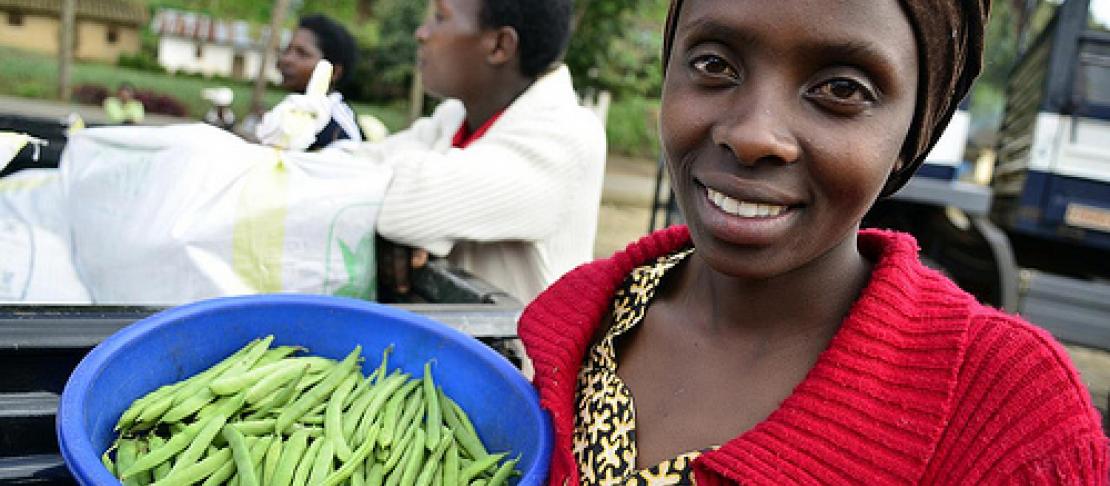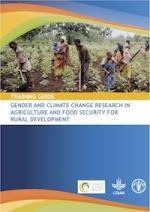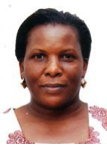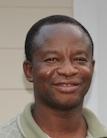Getting to the heart of gender issues in climate change and food security research

We are just beginning to understand how a changing climate can impact rural men and women quite differently in different agricultural systems across Africa and Asia. This is partly due to the differing roles and responsibilities men and women have in various cultures vis-a-vis food production, marketing, consumption and income generation.
Much research on agricultural and farming systems has examined the range of soil, water and land management strategies and technologies that can be considered ‘climate-smart’ agriculture options. Yet little emphasis has been placed on understanding the different adaptive strategies men and women pursue in order to secure their livelihoods in the face of a changing climate.
This is not easy, as it varies tremendously from place to place. Or perhaps not. We don’t really know until we’ve done the research across a wide range of sites representative of different agricultural systems and socioeconomic conditions.
Moving forward on gender research within a changing climate
 We set out first to identify the tools most useful for gaining a better understanding of current adaptation and mitigation strategies pursued by men and women across regions. The CGIAR Research Program on Climate Change, Agriculture, and Food Security (CCAFS) and the UN Food and Agriculture Organization (FAO) joined forces to review and refine existing tools, many of which were developed by FAO and partners over the last 10, and develop a new, module- and web-based training guide entitled “Gender and Climate Change Research in Agriculture and Food Security for Rural Development”. This was done with experienced local research teams from Bangladesh, Uganda, and Ghana, representing three key regions of the CCAFS program.
We set out first to identify the tools most useful for gaining a better understanding of current adaptation and mitigation strategies pursued by men and women across regions. The CGIAR Research Program on Climate Change, Agriculture, and Food Security (CCAFS) and the UN Food and Agriculture Organization (FAO) joined forces to review and refine existing tools, many of which were developed by FAO and partners over the last 10, and develop a new, module- and web-based training guide entitled “Gender and Climate Change Research in Agriculture and Food Security for Rural Development”. This was done with experienced local research teams from Bangladesh, Uganda, and Ghana, representing three key regions of the CCAFS program.
The manual sets out to provide users with resources and participatory action research tools for collecting, analyzing and sharing gender-sensitive information about agricultural communities, households and individuals who are facing climate changes. This will for instance sensitize users to the links of socio-economic and gender issues in the context of climate change in the agriculture and food security sectors. The guide also applies knowledge gained beyond research to promote gender-sensitive adaptation and mitigation activities in agriculture.
Part two of the training guide covers three main CCAFS research priorities:
- facilitating farmer exchange visits and other approaches for sharing adaptation strategies in ‘climate analogues’ areas (i.e. areas nearby that are currently experiencing the climate that you are predicted to be facing in the future (e.g. hotter, drier or wetter);
- Assessing how to facilitate the use of daily and seasonal weather forecasts for farmers and how to make access to forecasts more equitable; and
- Understanding and catalyzing gender-sensitive, climate-smart agricultural practices.
Lessons learned from testing the manual in the field
The approach outlined in the Training Guide was field tested in three pilot sites by experienced research teams from Bangladesh, Ghana, and Uganda.  One of these pioneering researchers was Dr. Florence Birungi Kyazze, a lecturer in the Department of Extension and Innovation Studies at Makerere University, Uganda. Florence describes how the gender training manual will be useful for organizations:
One of these pioneering researchers was Dr. Florence Birungi Kyazze, a lecturer in the Department of Extension and Innovation Studies at Makerere University, Uganda. Florence describes how the gender training manual will be useful for organizations:
“The different tools provide frameworks that enhance the segregation of gender data and information and this informs development agencies on the appropriateness of actions and strategies to equitably address challenges that men and women face in relation to climate change, agriculture and food security”.
She continues “The training guide that we developed has a number of tools that can be used to carry out gender analysis”. But at the same time, she stresses “the gender tools are not a one size fits all. One should select a right tool to use for the right purpose”.
One of the findings in the Uganda pilot study was that rural men and women still rely heavily on indigenous knowledge regarding the weather. Rural villagers, both men and women, are not yet receiving longer-run forecasts, although they do hear short-term weather forecasts, usually on the radio. Thus if men and women are to benefit from new science that is leading to improved seasonal weather forecasts, for example, actions are needed to help bridge differences in language and understanding of traditional weather indicators (changes in the direction of the wind, when certain trees, flowers, etc.) and the weather predictions coming from the national Meteorological Service. Communicating the uncertainty around seasonal weather forecasts remains a challenge. Trust is a key issue articulated by community members across these pilot studies (both men and women). More findings from Uganda will be available soon on the CCAFS gender page.
"Policy makers need to understand that men and women are differently vulnerable to climate change"
Another pioneering researcher involved in the research methods refinement was Mr. Jesse Naab, a Senior Research Scientist at the Savanna Agricultural Research Institute in Ghana and leader of the Farming Systems Research Team in North Western Ghana.
 “It is important that the consequences of climate change should not lead already marginalized sections of society into further deprivation,” said Mr. Naab of the research. “It is equally important that policy makers and key stakeholders understand the differing vulnerability to climate change that men and women face and their gendered implications,” he said.
“It is important that the consequences of climate change should not lead already marginalized sections of society into further deprivation,” said Mr. Naab of the research. “It is equally important that policy makers and key stakeholders understand the differing vulnerability to climate change that men and women face and their gendered implications,” he said.
A finding from the Ghana pilot study was that both men and women learn about promising agricultural practices when they visit neighbouring, as well as more distant, villages. In testing the guides, Mr. Naab observed that women travel less frequently and to nearer locations than men do, due to household (including childcare, gathering wood and water) and farming obligations. Design of interventions such as farmer-to-farmer exchanges and visits or films with communities that are already dealing with warmer and drier climates need to take such realities into account if they are to benefit women as well as men.
Download the working paper from Ghana "Using a gender lens to explore farmers’ adaptation options in the face of climate change: Results of a pilot study in Ghana" (PDF).
As a contribution to the celebrations taking place on International Women’s Day around the world, we hope that this Training Guide and the pilot studies from Uganda, Ghana and Bangladesh will help inform policies and interventions aimed at closing the gender gap between rural men and women facing tremendous changes in their lives, including a changing climate. We welcome your feedback!
Read more
Working paper: Using a gender lens to explore farmers’ adaptation options in the face of climate change: Results of a pilot study in Ghana
This story was written by Dr. Moushumi Chaudhury, a CCAFS science officer working on Linking Knowledge to Action, based at the World Agroforestry Centre in Nairobi, Kenya, with contributions from Mr. Jesse Naab and Dr. Florence Kyazze
